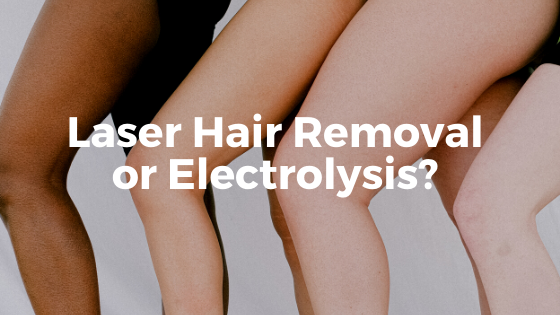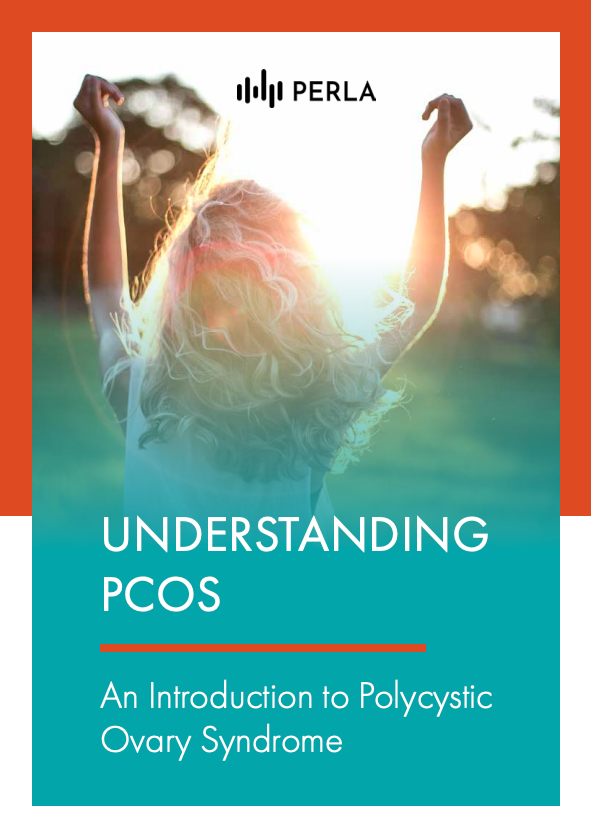Women with PCOS have to deal with a range of distressing symptoms including excessive facial and body hair (hirsutism) throughout their lives. Hirsutism is usually treated with anti-androgen medications and oral contraceptives. Long-lasting hair removal methods, such as electrolysis and laser therapy, have shown promising results when combined with hormonal treatments. But, do they work for everyone?
Permanent Hair Removal for Hirsutism
Hirsutism is a common clinical condition affecting women of all ages.1 It is characterized by excessive hair growth appearing in a male-type pattern.2 Affected women, especially young women, may experience a large psychological burden and an impact on their social life.3 Most women seek treatment mainly for cosmetic reasons, because excess facial hair outside of cultural norms can be very embarrassing.
Why does PCOS cause Hirsutism?
Hirsutism is not a disorder, but a symptom of an underlying medical condition. The majority of women with hirsutism may have PCOS.4 If you have been diagnosed with PCOS, your ovaries are producing excessive amounts of androgens, such as testosterone (which is also called hyperandrogenism). However, testosterone per se is not directly responsible for the formation of unwanted hair growth but rather its more powerful byproduct called dihydrotestosterone (DHT).5
Can Hirsutism Be Cured Permanently?
Hirsutism can be treated by addressing the root cause of the condition. However, not all causes of hirsutism are reversible. Some women with unwanted facial or body hair have no identifiable cause (idiopathic): their androgen levels are normal; their menstrual cycles are normal; their ovaries appear normal on ultrasound.6 Fortunately, most women with unexplained hirsutism have mild symptoms, which can be treated with a variety of hair removal techniques.
With regards to PCOS, one type of treatment may not be enough. Medications, on their own, may not make the hair go away completely, but will stop it from getting worse. Mechanical hair removal methods like waxing, laser epilation, and electrolysis will further enhance the effects of hormone therapy.
How does Electrolysis work?
Electrolysis is a common hair removal technique that uses electrical pulses to target the root of the hair in order to permanently destroy each hair follicle and prevent regrowth. This method works best when treating small areas, although larger areas such as the legs or back may be treated with multiple sessions over time.7
There are two types of electrolysis based on the electrical current used: high-frequency (thermolysis), direct (galvanic), or a combination of the two (blend). Galvanic is the oldest and most widely used method of the two because of its high success rate and safety profile.
Effectiveness
Electrolysis is the only permanent hair removal method approved by the FDA8, but its success depends on the skill of the operator. Regulation of the process varies from state to state.9 In contrast with laser techniques, electrolysis is expensive and more time consuming because it treats each individual hair.
Electrolysis can be performed in all types of hair, but studies show that it is most effective on hair in the active or growing phase (anagen)10,11, as this stage is where the newly formed hair starts to grow. Hairs treated in the resting phase (telogen) tend to regrow. You may be advised to shave 1-3 days prior to treatment.
Side Effects
Post-treatment side effects, which include redness around the treated area, pain, and swelling, are generally temporary. Scarring, depigmentation of skin, burns, and keloid formation in susceptible patients are possible. Make sure to check in with a healthcare professional about side effects you’re concerned about.
How Does Laser Hair Removal Work?
Laser-assisted hair removal is a generally safe and effective technique for women who desire a long-term reduction of hair growth. It works by focusing a beam of light to induce selective damage to hair follicles. This technique produces a gradual but permanent reduction of hair regrowth and can be used in larger areas of the body.
It works best on light skin and black coarse hair.12 This is because light hair with very little to no dark pigments do not absorb sufficient light photons emitted by the laser, so it’s impossible to completely destroy them.
Effectiveness
While electrolysis has been approved as a “permanent hair removal” method, laser epilation is classified as a “permanent hair reduction” technique. Providers should inform their patients that it will require 8-12 sessions plus maintenance treatment every 6-12 months to provide satisfactory hair removal.
With laser treatment, finer and lighter hair often remain after treatment. In many patients, the treatment may be ongoing. Still, laser treatment has surpassed electrolysis because it’s effective, fast, and relatively less painful.
Side Effects
The most common side effects of laser epilation are swelling and redness, which typically resolve within 24 hours. The procedure itself can be slightly painful but an anesthetic cream can be applied in advance. Hypopigmentation and hyperpigmentation may also occur depending on your skin color. If you’re concerned about any side effects of the laser treatment, make sure to check in with a healthcare professional.
Conclusion
Specialized hair removal techniques have high success rates but they must be combined with treatment of excess androgens. Both electrolysis and laser hair removal work for women with PCOS, but it’s important to manage your expectations. While some patients reported a growth delay of 2-6 months after just one treatment, most will need multiple sessions to achieve permanent hair reduction.
Note that hair can still grow even when many old hair follicles have been destroyed. Because hair grows in three different stages and your hair is not all in the same stage at the same time, destroying all follicles in a few sessions is unlikely. But when used in combination with other treatment options and tailored to the person, many will achieve satisfactory results.
Sources:
- Sachdeva S. Hirsutism: evaluation and treatment. Indian J Dermatol. 2010;55(1):3-7. doi:10.4103/0019-5154.60342
- Hirsutism: what is hirsutism, treatment for hirsutism – UCLA OB/GYN, Los Angeles, ca. Accessed July 22, 2020. https://www.uclahealth.org/obgyn/hirsutism
- Swingler R, Awala A, Gordon U. Hirsutism in young women. The Obstetrician & Gynaecologist. 2009;11(2):101-107. doi:10.1576/toag.11.2.101.27483
- Kopera D, Wehr E, Obermayer-Pietsch B. Endocrinology of hirsutism. Int J Trichology. 2010;2(1):30-35. doi:10.4103/0974-7753.66910
- Dihydrotestosterone | Endocrine Society. Accessed July 22, 2020. https://www.hormone.org/your-health-and-hormones/glands-and-hormones-a-to-z/hormones/dihydrotestosterone
- Matheson E, Bain J. Hirsutism in Women. Am Fam Physician. 2019;100(3):168-175.
- Barbieri R. Patient Education: Hirsutism (excess hair growth in women) (Beyond the Basics). Uptodate.com. https://www.uptodate.com/contents/hirsutism-excess-hair-growth-in-women-beyond-the-basics. Published 2020. Accessed July 23, 2020.
- Removing Hair Safely. U.S. Food and Drug Administration. https://www.fda.gov/consumers/consumer-updates/removing-hair-safely. Published 2010. Accessed July 24, 2020.
- Shenenberger DW, Utecht LM. Removal of unwanted facial hair. AFP. 2002;66(10):1907.
- Olsen EA. Methods of hair removal. J Am Acad Dermatol. 1999;40(2 Pt 1):143–57.
- Wagner RF Jr. Medical and technical issues in office electrolysis and thermolysis. J Dermatol Surg Oncol. 1993;19:575–7.
- Gacaferri Lumezi B, Goci A, Lokaj V, et al. Mixed form of hirsutism in adolescent females and laser therapy. Iran Red Crescent Med J. 2014;16(6). doi:10.5812/ircmj.9410


